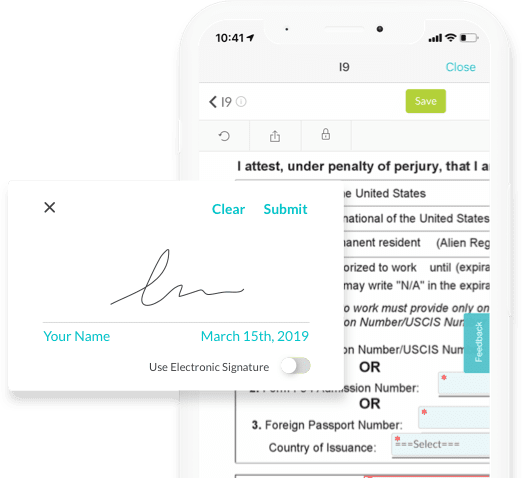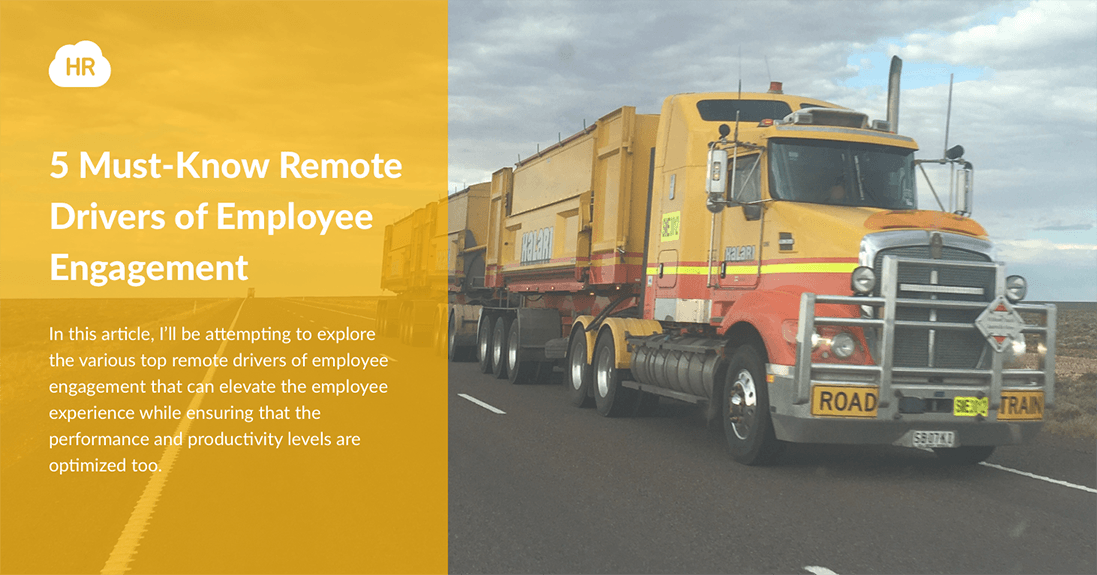Employee engagement is never easy. Throw in the pandemic fuelled stress to the mix, and the whole process becomes even more complex. That is why any good HR professional or leader should be able to do the one thing that will make the process of engaging their remote workforce seem doable- understand the remote drivers of employee engagement.
In layman’s terms, employee engagement is defined as a sense of loyalty, dedication, and an emotional connection to one's place of work. The more engaged an employee is, the more likely it is that they will enhance their performance and go above and beyond to do good work.
Engagement itself can be divided into four levels:
-
Highly Engaged: These employees are strong supporters of the company and believe they have a stake in its success.
-
Moderate Engaged: These employees enjoy their work, but something prevents them from going above and beyond.
-
Somewhat Disengaged: These employees are dissatisfied, but they will continue working. However, they show no sense of belonging or loyalty.
-
Disengaged: These employees are dissatisfied, will act out, complain, and provide negative feedback about the company.
Despite its qualitative nature, employee engagement is now universally recognized as an essential component of retaining top talent and achieving higher performance. However, there are a variety of factors that influence an employee's sense of engagement. These factors are not constant and can shift over time. We refer to these factors as the "drivers of employee engagement."
The previous year has forever changed the way we connect and work, but one thing remains constant: leaders want to win the talent war and keep their remote workforce happy and satisfied. In this article, I’ll be attempting to explore the various top remote drivers of employee engagement that can elevate the employee experience while ensuring that the performance and productivity levels are optimized too.
5 Crucial Drivers Of Employee Engagement In 2021 And Beyond

1. Digital Transformation
In a study conducted by the Harvard Business Review, more than 66 percent of CEOs said they expect their companies to change their business model in the next three years, with 62 percent stating they have management initiatives or transformation programs underway to make their business more digital.
And when we talk about most business processes going digital, your employee engagement strategy should not be left behind.
But here’s the thing. The new digital-savvy workers are looking for more than just a paycheck. For these new workers, the need to get appreciated for their work is pretty high on their checklist, with 79 percent of Gen Z and Millennial employees equating an increase in rewards and recognition to being more loyal to their employers.
An excellent employee engagement software or platform will provide low-cost pricing, a streamlined user experience, and easy accessibility, making it exceedingly simple to engage remote team members. This not only guarantees that you don't skip out on making your remote employees feel happy and valued, but it also serves as a great employee retention strategy.
2. Company Culture
Culture doesn’t only eat strategy for breakfast. It does much more than that.
The culture of a company is the first to experience the effects of any big change. Particularly now that most of us work from home, company culture lines have blurred, compromising the very foundation of the company's values and mission. This was evident in 2020, with worldwide rallies for greater DE&I focus and high-profile culture crises such as those at Uber.
It’s not surprising to know why culture is one of the top drivers of employee engagement. In a BCG study of 40 digital transformations, companies focused on culture were 5x more likely to achieve breakthrough performance than companies that neglected culture.
The culture and work environment determine a workforce’s ability to create genuine positive relationships, do meaningful work, bring about change, and feel mentally and physically safe. And that includes the remote work environment too.
Just because you have to give up your daily workplace rituals and face-to-face interactions don’t mean the company culture is doomed. It simply implies that companies must focus on redefining values and processes and understanding how external factors (such as the lockdown) influence employees' day-to-day work lives.
3. Workers Prefer Flexible Work
It comes as no surprise that people love remote work. After ages of demanding a better work-life balance, the unexpected shift in 2020 has made people realize that working from home can be as effective as working from the office.
According to a survey conducted:
About 83 percent of workers, who either work remotely or on-site, agree that an opportunity to work remotely makes them happier, resulting in a higher job satisfaction quotient. 74 percent of employees agree that they are less likely to leave their companies if they are given an option to work remotely.
And, honestly, it comes as no surprise that people actually like the more flexible work options. Before 2020,
Thus, engaging employees in 2021 and beyond can be as easy as offering remote work options for the near future. A lot of corporate giants, such as LinkedIn and Twitter, have already divulged into this route by offering permanent work-from-home options to their entire workforce.
4. Great Managers And Leaders
The manager's impact on employee engagement can be substantial. The question is whether the influence will be beneficial or negative.
Most times, it is not the company they work at but the boss they work under, which impacts engagement level. There have also been multiple online discussions in which employees have stated that they would rather work for a terrible company with a fantastic manager than a good company with a bad manager.
According to an extensive Gallup survey, 75 percent of workers who voluntarily left their jobs did so because of their bosses and not the position itself.
But what’s more concerning is that this situation has further escalated since the whole world went into lockdown. Micromanagers and lousy bosses can be the final nail in the coffin for a workforce already grappling with the work shift, balancing work and home, potential layoffs, and pandemic-induced worry.
People want their leaders and employers to be empathic and to work towards developing healthy and positive relationships with them. In fact, A Deloitte study found out that 44 percent of respondents stated that they would want to have regular and purposeful check-ins with leaders who sincerely care to know how their employees are doing.
As a result, it's critical to train management staff on how to deal with remote employees in a better way. The training should focus on how to choose the right type of leadership style that bridges the gap between management and employees.
5. Wellbeing
Currently, health, wellness, and safety are essential aspects in designing the ideal employee experience. No matter what industry you're in, you can't afford to ignore the role of employee wellness in driving engagement.
According to Gallup’s research, engagement and wellbeing are reciprocal, i.e., each influences the future state of the other. Furthermore, according to a Deloitte report, individual employees regard well-being as a high-level priority of workplace transformation. But strangely enough, employee wellness is near the bottom of the priority list for executives. So, despite the fact that well-being is a top driver of remote employee engagement, leaders aren't putting as much effort into improving it as they could.
Simply put, remote employee engagement will only be possible in 2021 if leaders start introducing new policies that prioritize employee health. It can be through a robust corporate wellness plan, new healthcare insurance, or even much-needed benefits of employee wellness programs such as a mental health day off (just like LinkedIn did!), period leaves, Covid-19 support, and more.
People feel satisfied and do meaningful work when they are psychologically secure, happy, and physically well. As a result, leaders should start to see employee health and well-being as a fundamental organizational core value that needs to be prioritized.
Takeaway
A Deloitte report addressed that while 90 percent of executives understand the value of employee engagement, fewer than 50 percent understand how to address this issue.
Furthermore, leaders have never experienced a transformation like this before. This decade is witnessing a global multi-generational shift, which is being accompanied by digitalization. Any outdated employee engagement approach will fail unless leaders recognize the new workforce's demands and drivers of employee engagement.
As a result, it is high time for modern executives and HR experts to look for more advanced and digitalized solutions to solve their employee engagement challenges.
About Author:
Anjan Pathak is the Co-Founder & CTO of Vantage Circle, a cloud-based employee engagement platform, and Vantage Fit, an all-in-one corporate wellness platform. He is an HR technology enthusiast, very passionate about employee wellness, and actively participates in corporate culture growth. He is an avid reader and likes to be updated on the latest know-how of Human Resources.
Keep Reading
Balancing Technology and the Human Touch in Employee Engagement
Companies are taking employee engagement very seriously because it is one of the ways of
Remote Onboarding Success Stories
When it comes to onboarding new hires, many companies understand the value and benefits

